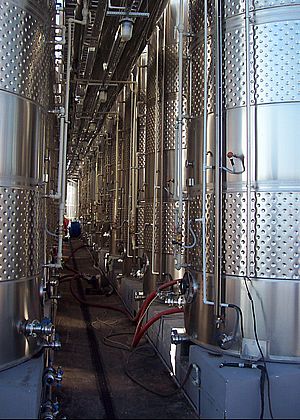By creating smart and responsive facilities, pharmaceutical manufacturers can optimise yield of regulatory compliant, high-quality medications. The latest advances in sensor technology can offer ever greater process transparency on the factory floor via the data produced. This can provide clear benefits that increase process and quality control/assurance as well as regulatory compliance.
While generating data is the first step in creating greater process transparency, it is crucial to gather these pieces of information in order to analyse them and turn them into process knowledge. This, in turn, can offer actionable insight to improve production processes as well as provide the foundation of quality audits and reports.
Look at the bandwidth
To unlock these opportunities a network technology that can handle the constantly growing flow of data from sensors and analytical equipment needs to be implemented. In practice, this means offering sufficient bandwidth to transfer as many data packets as possible within a given timeframe without any packet loss or network congestion.
Although many existing Ethernet systems offer a maximum bandwidth of 100 Mbit/s, pharmaceutical manufacturers that aim to build truly smart, connected factories should leverage more advanced solutions. The highest bandwidth currently available for industrial Ethernet networks is in the gigabit range. By adopting a technology with this capacity, companies can futureproof their industrial communications and lay the foundations for next-level data traffic.
Determinism and convergence
In addition to offering sufficient bandwidth, the ideal network should also be able to provide a deterministic method of data transmission, to assure predictable information flows. The latest Ethernet technology, Time-Sensitive Networking (TSN), brings this capability to the table, thanks to its defining IEEE 802.1 standards that assure tight synchronisation across the network along with providing methods to ensure predictable transmission of all data types. As a result, time-critical data from drives and controllers on the factory floor, e.g. from tableting lines, can be transmitted on the same network used for other Ethernet devices with less time critical requirements, such as vision systems or bar code readers.
The end result is converged networks, where it is possible to merge operational technology (OT) and information technology (IT) systems for truly responsive, smart data-driven manufacturing. More precisely, TSN’s determinism ensures the predictable delivery of all process data flows that OT requires while offering a framework to support IT functions for higher-level enterprise systems. As a result, companies can benefit from real-time decision-making opportunities, accurate operational control as well as unmatched databases for quality compliance reporting.
Furthermore, convergence can reduce the number of industrial networks required while supporting the creation of simpler architectures, as different types of traffic can be transferred on the same system.
The right soluiton is right here
Pharmaceutical manufacturers wanting to benefit from smart, connected plants and enterprises can implement them today. CC-Link IE TSN, the first open Gigabit Ethernet with TSN capabilities satisfies both the need for high bandwidth and convergence.
By implementing CC-Link IE TSN, pharmaceutical producers can achieve a number of key business benefits. In particular, simpler network architectures and machine designs, greater process transparency and better management, as well as optimised productivity and better integration of OT and IT systems.
ABOUT THE CC-LINK PARTNER ASSOCIATION (CLPA)
The CLPA is an international organisation founded in 2000, now celebrating its 20th Anniversary. Over the last 20 years, the CLPA has been dedicated to the technical development and promotion of the CC-Link family of open automation networks. The CLPA’s key technology is CC-Link IE TSN, the world’s first open industrial Ethernet to combine gigabit bandwidth with Time Sensitive Networking (TSN), making it the leading solution for Industry 4.0 applications. Currently the CLPA has almost 3,800 member companies worldwide, and more than 2,000 compatible products available from over 340 manufacturers. Around 30 million devices using CLPA technology are in use worldwide.




















